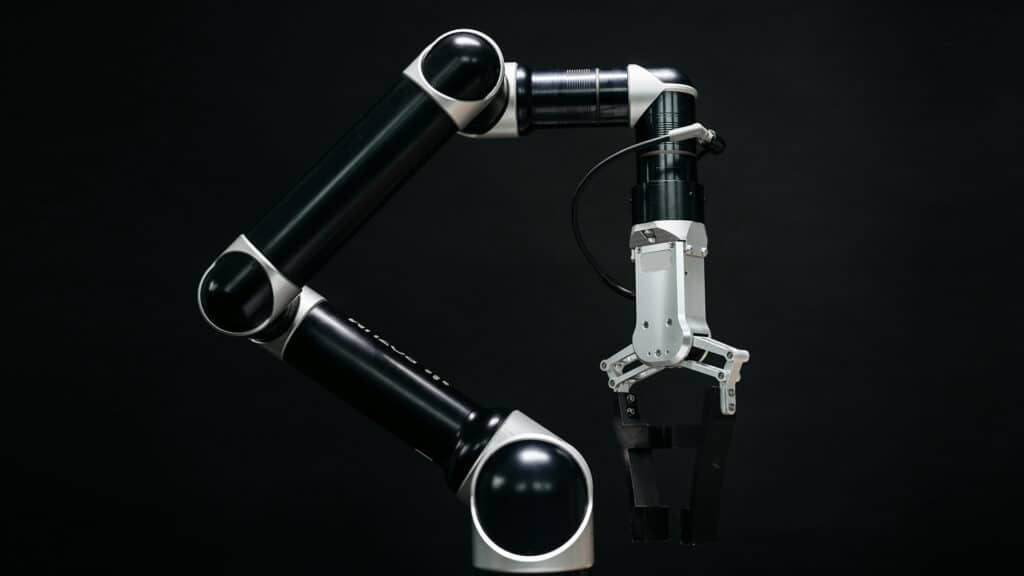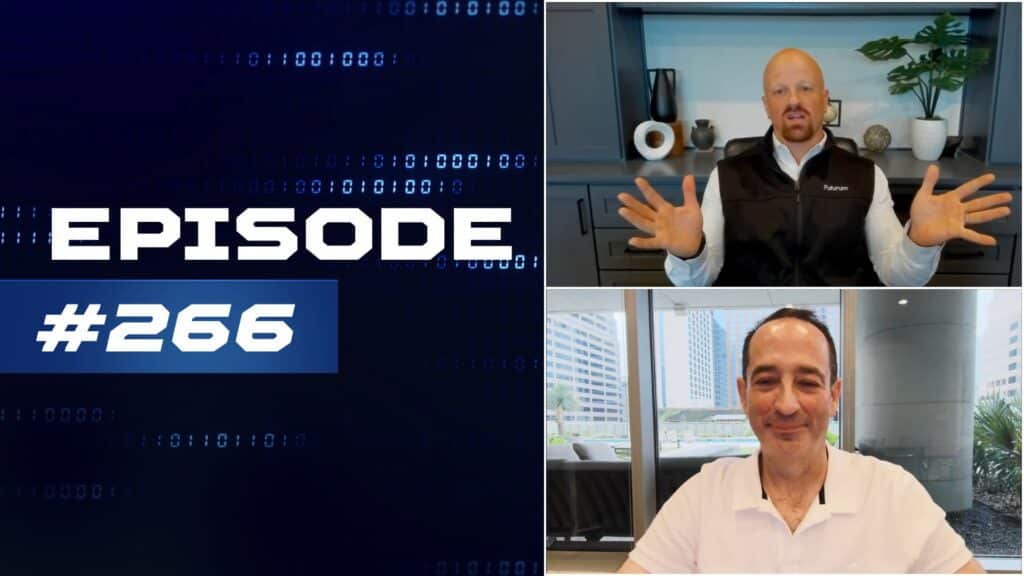In this vignette of The 5G Factor, Ron Westfall and Olivier Blanchard discuss why Ethernovia is developing the hardware and software system key to delivering the integration of advanced networking capabilities to advancing software-defined vehicle (SDV) and electric vehicle (EV) capabilities.
Ethernovia: Accelerating Vehicle Data Architecture Transformation. New entrant Ethernovia is charting a portfolio development course that aggregates massive quantities of data and routing between AI and SoC chipsets, which requires high bandwidth, low latency intelligent fabrics. As vehicle architectures evolve from domain-centric controllers toward zonal architectures, networking solutions must concurrently evolve to support higher data rates of advanced vehicle applications while meeting demand for improved reliability and security. We assess why zonal architectures are critical to advancing and scaling fast-evolving SDV/EV applications such as Advanced Driver-Assisted Systems (ADAS), autonomous driving (AD) and a rich ecosystem of customer software delivered Over the Air (OTA), including use of 5G connectivity.
Watch The 5G Factor show here:
Or, you can watch the full episode here, and while you’re there, subscribe to our YouTube channel.
Listen to the full episode here:
If you’ve not yet subscribed to The 5G Factor, hit the ‘subscribe’ button while you’re there and you won’t miss an episode.
Disclaimer: The Futurum Tech Webcast is for information and entertainment purposes only. Over the course of this webcast, we may talk about companies that are publicly traded and we may even reference that fact and their equity share price, but please do not take anything that we say as a recommendation about what you should do with your investment dollars. We are not investment advisors and we ask that you do not treat us as such.
Transcript:
Ron Westfall: I’m seeing AI, also, driving innovation across the automotive chipset market. And one example that comes to mind is that there’s a new entrant, Ethernovia that is, basically, charting development, of course, with their portfolio that is aiming to aggregate massive quantities of data and routing between the AI and SoC chipsets.
And naturally, this will requires high bandwidth, low latency, intelligent fabrics. And I prefaced that. And as background, Ethernovia completed its A round financing of $64 million. And I believe this is an impressive funding round because it’s, basically, a who’s who, companies you wouldn’t see backing this type of technology, includes Porsche, and that’s the Porsche Automobil Holding part of Porsche. So it’s really the key part of Porsche that is investing in this Qualcomm Ventures, VentureTech Alliance, AMD Ventures, Western Digital Capital, Fall Line Capital, et cetera. It’s really quite an impressive set of investors for an A round.
And what I’m anticipating is that as vehicle architectures evolve from domain centric controllers, which have worked fine so far, but we definitely need to take it to the next level. And that means that networking solutions must concurrently evolve to support those higher data rates so that advanced vehicle applications can meet the demand for what we’ve been talking about in terms of reliability, security, certainly, autonomous vehicle security comes to the top of mind. And such, these applications include what is known as advanced driver assistance systems or ADAS, as well as autonomous driving and other customer software capabilities that are delivered over the air.
And as a result, I believe Ethernovia is developing a comprehensive, yet streamlined hardware and software system that can meet these demands. And they’re doing that by integrating, basically, the network features that are purpose-built, purpose-developed for software-defined vehicles, SDVs. And I know we’ll be talking a lot more about SDVs, not only on this webcast, but certainly, as it evolves during the course of this year and after this year. And so I’m kind of bullish on Ethernovia. In fact, I am bullish on Ethernovia because I can see that it has impact, certainly, on 5G networks, that is transforming the automobiles communication network to provide the reliable standard space, high-speed connectivity that’s enabled or that is really essential for assuring that software-defined vehicles can meet all of these different demands. And with that, Olivier, is there anything about Ethernovia that stood out, from your perspective?
Olivier Blanchard: Yeah, two things, two things. One is the Qualcomm investment. Qualcomm’s been making a huge push in the automotive sector for the last few years, and they’ve been really successful with it. And so this has been a problem that’s been looming in the digital chassis, not just for Qualcomm, for everybody, for the entire industry, as a practical problem. And it’s the fact that you need faster switches and faster connectors to connect all these systems together. You don’t want to sensor to detect a pedestrian and be slow to send these signals to the processing unit and the processing unit to be slow sending it to the brakes and everything else. You want everything to be instantaneous. So lag is an issue. And one of the challenges that I see in this transformation or digital transformation of the automotive space and vehicle design, especially, is, essentially, we started with a domain based architecture, where, basically, every system has all of its connectors, its processing, and they get connected somehow.
And that causes two problems, one, a lot more hardware than you really need. We could do it more elegantly. And the other thing is a lot more cabling and a lot more connectors than you want in a car because suddenly, you have a car that has a lot of wiring that it didn’t have before, on top of huge batteries, if you’re talking about EVs and electrification. And so the weight of the vehicle becomes massive, exponentially heavier, and you start to run out of room as well if you have to constantly connect cables and you have all this domain based architecture. So what I’m seeing is a trend in the automotive industry is a switch to zonal architecture, which is much more efficient.
So it uses fewer cables, fewer connectors, fewer switches, it reduces the weight and the amount of wiring in the vehicle. And so if you’re going to do it that way, you need faster switches and faster connectors than you had before, less lag. And what I see here is, not just a company with a solution that addresses this problem, but I also see Qualcomm being one of the main purveyors of this new digital chassis investing in this particular solution and in this particular company. And I find that extremely interesting and very encouraging. And I’ll just stop there for now with that.
Ron Westfall: Yep, that’s excellent insights, Olivier. And yes, zonal architectures, that is really the future for automotive design. And I agree wholeheartedly. Ethernovia is coming up with a proposition that will inject well needed competition into advancing zonal architecture capabilities. Naturally, Marvell’s Brightlane Automotive Ethernet portfolio, I think, is driving this. It’s really raising industry awareness to global prominence. And so now, we’re seeing, okay, this is something that definitely has wheels, pun intended, and as a result, Qualcomm and certainly, I think the entire ecosystem, certainly, audio manufacturers and so forth, understand that they have to move away from the domain constricted, siloed type of architecture that did introduce all that complexity. It’s weight, just the weight of the wiring alone can actually impede the energy efficiency of an automobile. And so this is fully aligned with the migration toward EVs and toward, simply, better performing, more fuel efficient cards. And so speaking of-
Olivier Blanchard: And more cost-effective on the manufacturing side too, I imagine.
Ron Westfall: Oh, exactly. I mean, what’s not to like? I mean, this is what we like to see. This is the innovation that is capturing many of the best of many worlds. And so that, it’s about energy efficiency, it’s about cost saving, it’s about better performance, better safety capabilities and all that.
Other insights from The Futurum Group:
Recogni Launches Pegasus PCIe Card to Spur Autonomous Mobility Innovation
Marvell Powers Automotive Ethernet Switch Technology into Global Prominence | Futurum Tech Webcast
5G Factor: Qualcomm, Ethernovia, Cadillac Prep AI-Infused SDV Highway Star Era
Author Information
Ron is an experienced, customer-focused research expert and analyst, with over 20 years of experience in the digital and IT transformation markets, working with businesses to drive consistent revenue and sales growth.
He is a recognized authority at tracking the evolution of and identifying the key disruptive trends within the service enablement ecosystem, including a wide range of topics across software and services, infrastructure, 5G communications, Internet of Things (IoT), Artificial Intelligence (AI), analytics, security, cloud computing, revenue management, and regulatory issues.
Prior to his work with The Futurum Group, Ron worked with GlobalData Technology creating syndicated and custom research across a wide variety of technical fields. His work with Current Analysis focused on the broadband and service provider infrastructure markets.
Ron holds a Master of Arts in Public Policy from University of Nevada — Las Vegas and a Bachelor of Arts in political science/government from William and Mary.
Olivier Blanchard is Research Director, Intelligent Devices. He covers edge semiconductors and intelligent AI-capable devices for Futurum. In addition to having co-authored several books about digital transformation and AI with Futurum Group CEO Daniel Newman, Blanchard brings considerable experience demystifying new and emerging technologies, advising clients on how best to future-proof their organizations, and helping maximize the positive impacts of technology disruption while mitigating their potentially negative effects. Follow his extended analysis on X and LinkedIn.












